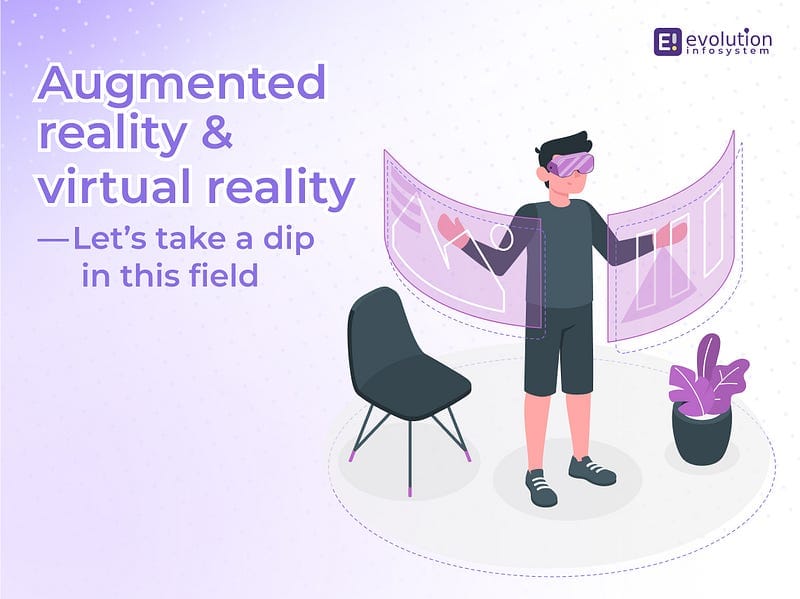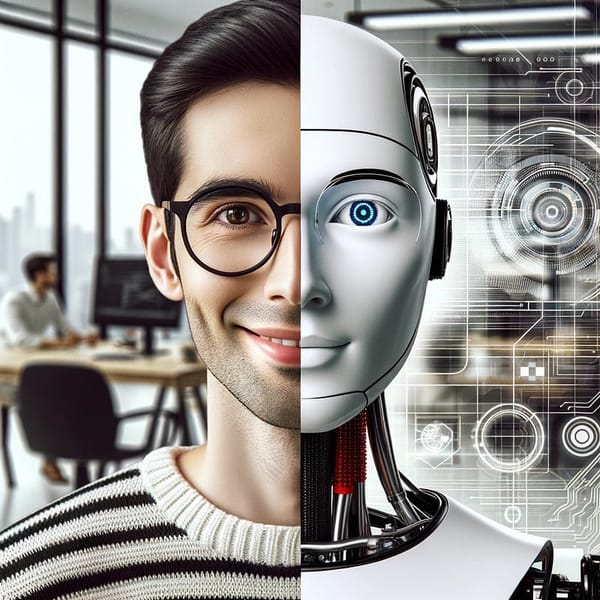“Augmented reality and virtual reality — Let’s take a dip in this field”
What is Augmented Reality

What is Augmented Reality
As the name suggests, augmented reality (AR) is content overlaid on top of the customer’s real-world view. The technology lets human beings feature digital assets in their physical surroundings. AR has an extensive form of use — from assisting pilots and surgeons with complex responsibilities to enhancing our Instagram stories with amusing filters.
Those Snapchat filters? Yeah, this is augmented reality. Pokemon Go? Totally augmented reality. Oculus Rift? Well, no. That’s certainly a virtual reality, and we’ll get to that later. As fighter pilots fly nearly twice as fast as sound and surgeons perform complex procedures, augmented reality (AR) has always been a novelty. However, it wasn’t always available or so advanced.
Sensors & Cameras
Cameras & sensors are the initial elements of AR. To create augmented reality, you first need to click some actual truth with sensors and cameras that collect informants’ data in the customers’ actual environment. This real-time record is a backdrop for the experience. Smartphone applications genuinely use your cellphone’s built-in camera, whilst greater complex devices like Microsoft’s HoloLens use a ramification of specialized built-in cameras. AR experiences work higher with cameras that could study photos in 3-D, just like the iPhone X’s TrueDepth digital camera, for the reason that intensity facts permit for a more realistic experience.
- AR functionality should stay on your website, not in a committed AR app. Customers don’t need to download an app only to use AR features. To experience the sales enhancement that AR features can provide, terminate unnecessary hurdles to their usage.
- AR-generating software can prevent time, power, and money. A few years ago, any logo that wanted AR had to construct the functionality itself, from the ground up. Today, a software program like Threekit makes it possible to generate AR content with a SaaS model. This makes the direction to AR smoother, faster, and more convenient.
- Build AR for smartphones. Again, if you need the advantages AR offers, you have to maximize the percentages that your customers will use it. That approach is a growing AR experience that works with the tech the majority have these days, because of these smartphones (along with iPhones and Android).

Tools & framework
So with the aid of now, you’re probably thinking “How can I get started out with my first-fantastic AR app?” Before I let you explore the wonderful world of Augmented Reality, let me introduce you to the leading industry standards.
- AR Toolkit
As we’ve noted before, this changed into the primary broadly to be had and open-source library focused on AR. The software uses video tracking capabilities to determine the camera’s orientation and location relative to physical markers or natural features in real-time when creating robust augmented reality.
Once the actual digital camera function is thought of, a virtual digicam can be placed on the identical point and 3-D computer graphics models can be drawn, exactly overlaid at the real marker.
Therefore, ARToolKit does away with two of the most annoying problems in Augmented Reality: viewpoint tracking and interacting with virtual items. Moreover, ARToolKit is available for the most not unusual systems: Windows, macOS, Linux, iOS, and Android.
2. ARKit
ARKit — With their today’s A11 chips and depth-perceiving cameras, Apple has taken a jump forward through liberating ARKit to iOS builders. It gives persistent AR reports that persist among periods and can be resumed at a later time. Moreover, these sessions may be shared with the aid of multiple customers, each with their iOS device.
Of course, ARKit additionally presents Image and Object Detection and Tracking: ARKit 1. Five delivered assist for 2D picture detection, letting you trigger an AR revel in based totally on 2D photos like posters, artwork, or signs and symptoms; ARKit 2 extends this aid to offer full 2D photograph monitoring so that you can incorporate movable objects like product bins or magazines into your AR experiences; 3D objects can also be located like sculptures, toys, or furniture.
3. ARCore
ARCore — Google has also advanced a platform for constructing augmented reality reviews for Android and iOS. Using exceptional APIs, ARCore permits your smartphones to feel its environment, apprehend the arena and have interaction with facts.
Android and iOS users can share AR stories using some of the APIs. ARCore makes use of your phone’s digicam for movement tracking, allowing it to recognize and tune its position relative to the sector. Afterward, it uses environmental information to come across the scale and environment of all forms of surfaces: horizontal, vertical, and angled surfaces just like the floor, a coffee table, or walls.
Finally, it performs mild estimation to estimate the surroundings’ modern-day lighting situations.
- Here some points are mentioned which are trending in 2024.
- Mobile AR: apple ARKit, google ARCore
- AR in shopping & retails
- Utilizing AR for navigation
- AR relies on AI
- Remote assistant & virtual manual
- AR in automotive industries
- Portable AR
- AR events
- AR in remote education
- LiDAR
What is Virtual Reality?

Virtual reality makes use of virtual technology that mixes the cyber world of records with the physical world, allowing customers to interact with and react to a non-physical “reality.” Virtual reality generation can range from a computer display showing how a product could appear in a purchaser’s home to head-mounted shows that offer an immersive digital experience.
With a multiplicity of emerging hardware and software alternatives, the destiny of wearables is unfolding but unknown. Among the leading concepts are HTC Vive Pro Eye, Oculus Quest, and Playstation VR, but Google, Apple, Samsung, Lenovo, and others are bringing new levels of immersion and value to the industry. Whoever comes out beforehand, the simplicity of buying a helmet-sized device that can work in a living room, workplace, or factory ground has made HMDs middle stage with regards to Virtual Reality technology.
Nowadays, the marketplace is demanding applications that pass beyond leisure, tourism, or advertising and marketing and are extra low priced for customers. To avoid the clipping effect that can appear when positive solid objects are handled through virtual interfaces, improvements must also be made to these interfaces. Or to decrease the consequences that VR produces in humans, among them motion illness, which consists of dizziness triggered by the mismatch between the motion of our frame and what is being seen within the virtual world.

AR Vs. VR keypoint
AR we could the user revel in the real world, which has been digitally augmented or better in some way. VR, on the other hand, removes the user from that actual-world experience, replacing it with a completely simulated one.
Due to the nature of VR, VR devices completely close off the physical world. While smart glasses have AR capabilities, the lenses are transparent. Identifying the pleasant experiences for each will depend on understanding those differences.
Why Must Businesses Invest In VR And AR Technology?
If you want to know the future of VR and AR, take a look at the given market stats. It will help you to find out at what extent business can gain desired outcome.
- In 2024, the AR and VR market is expected to bring in US$38.6 billion in revenue.
- By 2028, the market is predicted to have grown to a value of US$58.1 billion, with a compound yearly growth rate (CAGR) of 10.77%.
- AR Software is the largest market category within the AR & VR market, with a projected market value of US$13.0 billion by 2024.
- Within this market, the US is the largest source of revenue, with a forecast market volume of US$10,260.0 million in 2024.
- It is significant to remember that B2C revenues are the only ones included in the revenue figures listed here.
- This indicates that 55.0% of the market is covered by the B2C market share that is being displayed (B2C & B2B).
Ready To Build Mobile Apps With AR/VR Technologies? Let’s Connect!
The future of VR and AR is promising incredibly, with the potential to change several aspects of our lives. Moreover, AI development solutions in VR/AR enhance the realism of such transformative technologies that show how AI will impact the scope of future virtual and augmented reality. As a result, businesses are investing in implementing AI in their VR/AR and improving their productivity.
So, if you are one of those who want to take their businesses to the next level, find a mobile app development company. Evolution infosystem is an Android app development company with expert developers delivering high-quality desired outcomes. With many years of experience, Evolution infosystem is always ready to help you with any issue.




